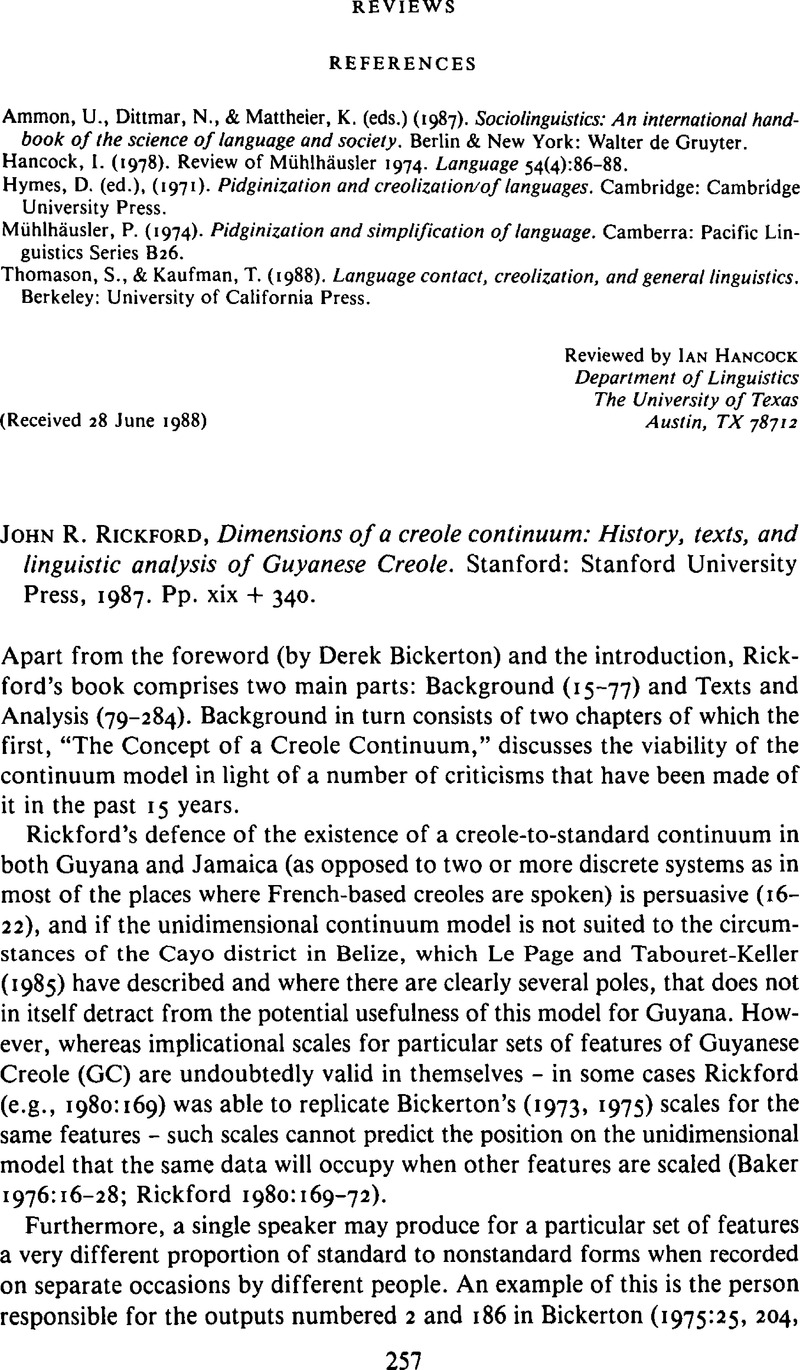No CrossRef data available.
Article contents
John R. Rickford, Dimensions of a creole continuum: History, texts, and linguistic analysis of Guyanese Creole. Stanford: Stanford University Press, 1987. Pp. xix + 340.
Published online by Cambridge University Press: 18 December 2008
Abstract
An abstract is not available for this content so a preview has been provided. Please use the Get access link above for information on how to access this content.

- Type
- Book Review
- Information
- Copyright
- Copyright © Cambridge University Press 1990
References
REFERENCES
Anon. (1853). British Guiana: Demerara after fifteen years of freedom. By a Landowner.London: T. Bosworth.Google Scholar
Baker, P. (1976). The problem of “variability” with special reference to Bickerton's study of Guyanese English. Unpublished MA exam option paper, University of York.Google Scholar
Baker, P. (1982). The contribution of non-Francophone immigrants to the lexicon of Mauritian Creole. PhD thesis, School of Oriental and African Studies, University of London. (Ann Arbor: University Microfilms no. 8529054, 1985).Google Scholar
Bickerton, D. (1975). Dynamics of a creole system. Cambridge: Cambridge University Press.Google Scholar
Le Page, R. B., & Tabouret-Keller, A. (1985). Acts of identity. Cambridge: Cambridge University Press.Google Scholar
Rickford, J. R. (1980). Analyzing variation in creole languages. In Valdman, A. & Highfield, A. (eds.), Theoretical orientations in creole studies. New York: Academic. 165–84.Google Scholar


